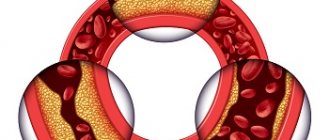The Slavic ancestors revered oak as the tree of the supreme god of the thunderer Perun. The places of worship of the idol were surrounded by oak groves, and the wise men burned sacrificial bonfires from oak branches. Our ancestors also knew about the healing qualities of the mighty tree. Oak bark has long been used for diarrhea. Ancient rituals have been lost over the centuries, and a decoction of oak bark for diarrhea is still a popular folk remedy.
Composition and properties of oak bark
Oak bark is a herbal medicine whose effectiveness is recognized by official medicine. The medicinal properties of the plant are due to its unique composition. The top woody layer of wood contains from 8 to 12% tannins.
The most effective of them are:
- Resorcinol, pyrogallol.
- Tannic, gallic and ellagic acids.
- Catechins.
- Quercetin.
- Leukoanthocyanidins.
These are water-soluble complex organic substances. Once on the mucous membrane, they form stable compounds with surface proteins. A thin, durable shell is formed.
It performs a number of useful functions:
- protects the mucous membrane from chemical irritation by digestive enzymes and food components;
- prevents excessive filtration of water by the intestinal walls and dilution of feces;
- blocks bacteria's access to nutrients;
- strengthens the walls of blood vessels, preventing bleeding;
- accelerates the healing of erosions and ulcers;
- relieves inflammation, soothes mucous membranes.
The astringent properties of the bark will help with poisoning with heavy metal salts. Tannins precipitate them into insoluble compounds and prevent toxins from entering the bloodstream.
Main therapeutic properties
The healing effect of this product has been known for quite a long time. The bark is used to treat various diseases of the cardiovascular, digestive and genitourinary systems. However, the most common use of the product is in the treatment of acute or prolonged diarrhea. This is due to the fact that the bark has a number of medicinal properties:
- prokinetic,
- antioxidant,
- anticoagulant.
The therapeutic effect of the bark is entirely based on its rich composition: a large number of micro- and macroelements, tanning components, levulins, flavonoids.
Bark
Note! Diarrhea is a sign of a huge number of pathologies, so if the condition does not improve, you should seek emergency medical help.
Self-collection of raw materials
The use of oak bark for diarrhea will have the desired effect only if the quality of the plant material is proper. In early spring, before the leaves are released, when the tree sap is just beginning to move, they go to the cutting area or felling sites. On young tender branches, carefully make circular cuts with a knife and remove the bark. The procurement of raw materials is carried out with the permission of the forester in specially designated areas.
Dry the collected bark in a dry, cool, ventilated place, spreading it in a thin layer on a clean cloth. Raw materials are turned over daily. Store in linen bags, away from light and moisture. Oak bark for diarrhea retains its healing properties for 5 years when properly collected and dried.
Medicinal properties
The high effectiveness of oak bark for diarrhea is explained by its anti-inflammatory, antimicrobial and astringent effects. This medicinal plant contains the following substances:
- pentosans:
- tannins;
- catechin;
- acids;
- vitamins;
- flavonoids;
- Sahara;
- proteins;
- levulins;
- quercetin.
Important! Oak bark is effective for diarrhea due to its high concentration of tannins. These elements form a protective layer on the intestinal mucosa, preventing further irritation.
The astringent components of the medicinal plant are tannins. They help strengthen protein tissue, making it impervious to bacterial and viral infections. Moreover, tannins help strengthen the immune system. Pentosans stop the inflammatory reaction and also promote the healing of wounds and burns. Pectins break down the food bolus and take an active part in the functioning of the gastrointestinal tract.
Catechin fights pathogenic microflora, preventing their further penetration into the deeper layers of internal organs. Flavonoids work at the cellular level, promoting their regeneration. These substances relieve irritation and calm the nervous system. Quercetin is beneficial for the circulatory system. The element strengthens the vascular system of the whole body. The composition of oak bark also includes macro- and microelements necessary for the coordinated functioning of internal organs.
Let us highlight the main medicinal properties of oak bark:
How to drink activated charcoal for diarrhea
- astringent effect. This is the most important thing that is necessary in the fight against diarrhea. The plant quickly relieves unpleasant symptoms and alleviates the general condition;
- antibacterial effect. The bark acts on the very cause of diarrhea, destroying pathogens;
- analgesic property;
- antihelminthic effect;
- relieving irritation;
- disinfectant function;
- enveloping effect;
- regeneration;
- hemostatic property;
- wound healing effect;
- anti-inflammatory function. It is especially important in cases where the cause of diarrhea is an inflammatory reaction or an infectious process in the digestive tract.
Oak bark for diarrhea caused by intestinal infections or helminthic infestations can be used as an adjuvant due to its anthelmintic or antibacterial effect.
When does oak bark help?
Take oak bark for diarrhea of any origin. When the cause of diarrhea is overeating, consumption of incompatible or very fatty, spicy foods, folk remedies made from oak bark will quickly restore normal stool. For intestinal disorders caused by an infectious-inflammatory process, herbal medicine will eliminate inflammation, speed up healing, and kill microbes.
We recommend: Why does an adult have green diarrhea - what are the reasons?
Symptoms of various gastrointestinal diseases, manifested by loose stools, can be easily corrected with means from the bark. If the dosage and course of treatment are followed, oak bark will help even pregnant and lactating women.
You can take medications for diarrhea from oak bark in several dosage forms: decoctions, infusions, tinctures, enemas. The choice of method of use depends on the localization of the pathological process and the presence of certain diseases. For example, if you have colitis, it is better to do an enema, and if you have a stomach ulcer, you should not drink alcohol tincture.
Procurement rules
The results of treatment largely depend on the quality of the oak bark. To combat diarrhea, only bark removed from young trees can be used. Thick material from old trees is not suitable for treating diarrhea. When drying the material, do not allow it to get wet. In this case, there is a loss of medicinal properties. Raw materials must be dried in a dry, well-ventilated room.
The greatest amount of tannins is contained in the bark of young oaks
The bark must be spread out in a thin layer and turned over every day. Medicinal raw materials should not have any damage or cracks. Material affected by lichen is also unsuitable for treatment. Oak bark should be collected in early spring. During this period, the buds bloom. Collecting raw materials does not cause any difficulties, since the bark is easily separated from the tree trunk.
Bark is harvested from already cut down oak trees. Do not remove bark from a “living” tree, as this may lead to its death. To collect raw materials, it is better to give preference to those trees that grow far from industrial zones and busy roads. Otherwise, instead of a therapeutic effect, you will receive a large dosage of heavy metals and other harmful emissions that accumulate in the plant.
You should not choose areas for cutting that are damaged by fungal infection or other pests. It is better to carefully sort out the raw materials and clean them of debris, dust and other contaminants. You should not wash oak bark under running water. Using a sharp knife, you need to make transverse circular cuts, and then carefully cut it lengthwise. In this case, you need to try not to damage the barrel.
The collected raw materials are crushed and dried. Dry bark can be stored for up to five years in a cool, dark place by placing the raw material in paper bags or bags. To check if the material is dry enough, try bending it. It should break under the slightest pressure. If it just bends, then it should continue to dry. You can speed up the drying process by using a stove or oven. In this case, the temperature should not exceed fifty degrees.
For high-quality drying, three basic conditions must be adhered to:
- Good room ventilation.
- Low humidity.
- No ultraviolet radiation.
For whom bark medicines are not suitable?
Contraindications to bark products are children under 2 years of age. It is not advisable for adults to take herbal medicine if they are individually intolerant to its components. A predisposition to constipation is a contraindication to the use of oak bark due to its strong fixative properties.
Oak bark is not recommended for those suffering from hemorrhoids, but oak decoction is considered an effective folk remedy for hemorrhoids as a medicinal bath.
No one should exceed the dosage of medications or make the brew stronger - this can cause stomach upset due to a negative effect on the stomach lining. People with kidney, liver, and gallbladder diseases should be careful when treating with bark products and consult a doctor.
Contraindications
Do not forget that the plant has some medical contraindications. Among them are:
- exacerbation of diseases of the gastrointestinal tract (GIT);
- pregnancy period. The grass can cause uterine hypertonicity, which can lead to miscarriage;
- lactation period. Substances contained in oak bark pass into breast milk. They can cause vomiting and diarrhea in the baby;
- children under three years of age;
- prolonged constipation;
- thrombophlebitis;
- haemorrhoids;
- individual intolerance to components;
- problems with the liver, gallbladder or kidneys.
For children under one year old, oak bark can be used to prepare medicinal baths. Taking the plant internally at such an early age is unacceptable. Older children can be given oak bark only after a doctor's prescription.
Ignoring contraindications can lead to nausea, vomiting, constipation or increased diarrhea, as well as intestinal or stomach bleeding. If after taking the decoction or tincture you experience general malaise or a skin rash, stop treatment immediately and consult a doctor.
Attention! If you drink more than two glasses of oak bark at a time, you can achieve the opposite effect - constipation.
Doctors recommend a treatment course of no more than two weeks. This should be followed by a 30-day break. Otherwise, symptoms of overdose may occur:
- decreased body temperature;
- decreased sense of smell (if you use the plant as a mouth rinse);
- colic in the abdomen;
- flatulence;
- incessant vomiting.
Using oak bark during pregnancy may cause miscarriage
How to brew oak bark for diarrhea
In the collection of folk wisdom there are many recipes for decoction of oak bark for intestinal laxity.
Recipe No. 1 is suitable for diarrhea that has just begun, and is characterized by a high content of astringent components:
- Place a tablespoon of dry raw materials in an enamel liter pan.
- Brew three glasses of boiling water.
- Cover with a lid and place on low heat.
- Keep the broth on the stove for 15 minutes, avoiding strong boiling.
- Remove the broth from the heat and cool under the lid for an hour.
- Strain through double cheesecloth.
Drink 50 ml (a quarter glass) 3-4 times a day 20 minutes before meals. The course of treatment is from 3 to 5 days. If desired, dilute a little with water, add a teaspoon of sugar - the broth is very bitter. If the remedy does not help, seek qualified help.
We recommend: Is it possible to eat persimmon with diarrhea?
Recipe No. 2 will help with long-term debilitating diarrhea. Preparation comes down to the following:
- Place two tablespoons of dry oak bark in a liter glass jar.
- Pour 800 ml of hot but not boiling water. To obtain water at the desired temperature, boil the kettle and wait 10 minutes.
- Pour a third of the water into a three-liter saucepan at the same temperature as in the jar (from the same kettle). Place the jar in the pan.
- Place the pan with the jar on low heat for 30 minutes. The water should not boil too much.
- Remove the pan from the stove and remove the jar with a towel. Leave the jar covered with a towel for half an hour to cool.
- Strain the broth through a fine strainer or cheesecloth.
The resulting product can be drunk with sugar or a teaspoon of honey, 5 tablespoons 3 times a day for up to a week. A child over 8 years old is given this decoction 2 tablespoons 3 times a day.
Infusion of alcohol-containing liquids
To treat chronic diarrhea, an alcoholic tincture of oak bark is also used. It can be used for dysbiosis and irritable bowel syndrome. The medicine is prepared as follows:
- It is necessary to pour 200 ml of vodka into a container into which 10 tablespoons of dried bark are first poured.
- The jar with the mixture should be tightly sealed with a lid and placed in a cool, dark place (with a temperature of no more than 18ºC).
- After 7 days the mixture will darken. After this, the antidiarrheal tincture will be ready.
A long waiting time is a prerequisite for preparing the medicine. If alcohol is used instead of vodka, the amount of liquid must be reduced to 100 ml. The finished mixture is filtered and the bark is thoroughly squeezed out.
The medication is taken before meals in the morning and evening. To do this, dissolve 20 drops of tincture in half a glass of chilled boiling water and drink slowly. The positive effect of treatment can be observed on the third day of treatment. If there are no improvements or side effects appear in the form of constipation, vomiting, you should immediately inform your doctor.
Important! When using folk remedies made from oak bark to treat diarrhea, you cannot refuse to take medications prescribed by a gastroenterologist. Tinctures and decoctions are used only as aids.
Infusions and tinctures
An infusion is a water extract from plant materials, and an alcoholic tincture is called an infusion.
An infusion of oak bark is prepared as follows:
- Boil 500 ml of water and cool for half an hour;
- Finely break two tablespoons with your fingers and place in a clean glass jar;
- pour boiled warm water, close tightly with a nylon lid and leave for 10 hours in a dark place;
- Strain the resulting infusion into another jar and drink a quarter glass 4 times a day over 2 days. Continue treatment for no more than 3 days.
Alcohol tincture on the bark is obtained as follows:
- one teaspoon of finely chopped bark is placed in a 500 ml dark glass bottle;
- pour 400 ml of good vodka into the bottle, close tightly;
- infuse in a dry, dark, cool place for 10 days.
How to use the tincture: add 7-8 drops of alcohol extract to a tablespoon of water and take 3 times a day 20 minutes before meals. The course of treatment is 5-7 days. You can drop the tincture onto a piece of refined sugar.
We recommend: How to avoid diarrhea after anal sex?
This dosage form is contraindicated:
- Children under 18 years old.
- Pregnant and lactating.
- Patients with stomach and intestinal ulcers.
- People with kidney and liver diseases.
- Suffering from alcoholism and nervous disorders.
Ethyl alcohol is quickly absorbed in the intestine, enters the blood and has a therapeutic effect faster than aqueous preparations. When treating with oak bark products of any form (infusions, decoctions, tinctures), you must follow a diet, diet, and daily routine.
List of contraindications for treatment
Medicines and many folk methods have made the product quite widespread and in demand. However, despite its popularity and a number of advantages, there is a certain list of factors that make taking bark impossible. List of contraindications:
Adults who have no contraindications can take bark-based products without consulting a doctor, but only for a short time.
Oak bark is an effective remedy used in the treatment of diarrhea. The product has a number of contraindications and side effects.
Enemas
To treat children over 2 years old, medicinal enemas with a decoction of oak bark and chamomile are used. Place a teaspoon of oak bark and a teaspoon of chamomile flowers in a thermos. Pour 500 ml of boiling water and leave for an hour. Then carefully filter through double sterile gauze. The solution for administration into the child’s rectum should correspond to 36-39 0C. From 20 to 40 ml are administered, depending on the age of the child. For adults with inflammation of the colon, enemas with a volume of up to 100 ml are recommended. For children, it is recommended to give an enema using a device from a pharmacy with a gas outlet tube. For adults, a regular syringe is suitable.
Oak bark has stood the test of time and has proven effective against various types of diarrhea in adults and children over 2 years of age. Diarrhea caused by dietary errors or mild food poisoning can be successfully treated with herbal folk remedies. A wide range of dosage forms allows the bark to be used according to the individual needs of the patient. You can prepare medicinal raw materials yourself, taking precautions and without damaging the trees. Oak grows for a very long time.
Useful Features
The development of diarrhea most often results from food poisoning, the penetration of bacteria into the body, excessive use of laxatives, and dietary disorders. The release of liquid feces is the result of accelerated motility and impaired absorption of water and nutrients in the intestines. This is due to inflammatory damage to its walls.
The effectiveness of using oak bark against diarrhea is due to its astringent and antimicrobial properties. It successfully copes with inflammatory processes. This product contains a number of active components:
Bananas for diarrhea - can I eat them?
- Sugar;
- tannins;
- micro- and macroelements;
- starch;
- flavonoids;
- pentosans;
- proteins;
- levulins.
The medicinal properties of this product are due to the large amount of tannins. It may contain 10-25% of these components. According to their chemical structure, they are high-molecular phenolic structures.
This product contains tanning components, which are derivatives of catechin, ellagic and gallic acids. When they react with protein elements, they become denatured. Thanks to this, an astringent effect is achieved and inflammation is eliminated. As a result, a protective layer is formed in the intestines, which prevents subsequent damage to the organ.
Oak bark has anthelmintic and antibacterial characteristics. Therefore, this substance can be used as part of a complex therapy for diarrhea caused by parasitic infestations and intestinal infections.
Treatment of diarrhea
It is always important to consider the reason for the diarrhea. This can often be done on your own, but if the diarrhea does not go away for a long time or is bloody or mucus, medical attention is required. The doctor will recommend what laboratory tests should be performed to accurately determine the cause of the disorder.
In addition to using any medications or traditional treatment methods, it is important to adjust the diet and follow a diet for some time. For intestinal disorders, a protein diet is recommended with the exclusion of foods prone to fermentation. If the diarrhea is putrefactive, the menu should focus on carbohydrates.









